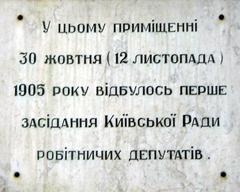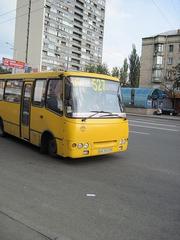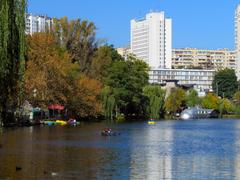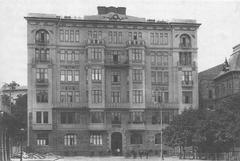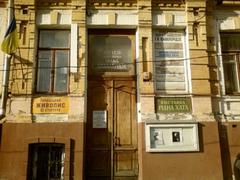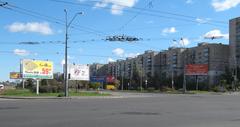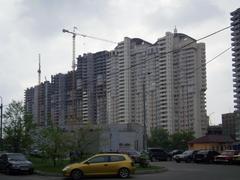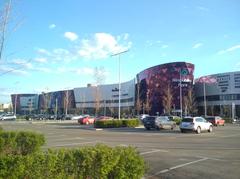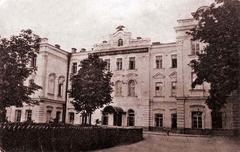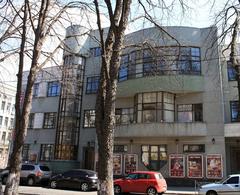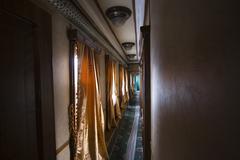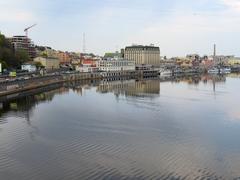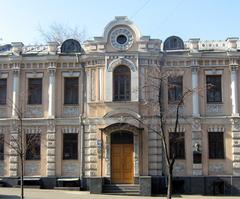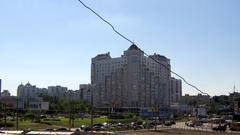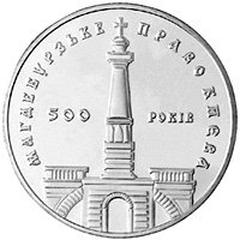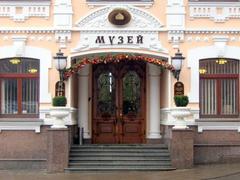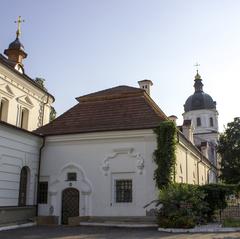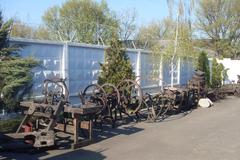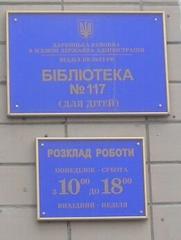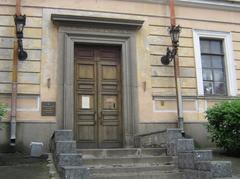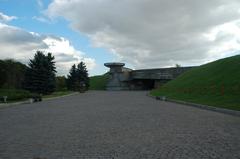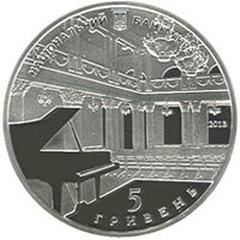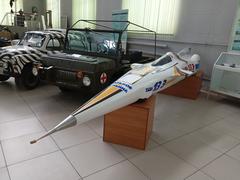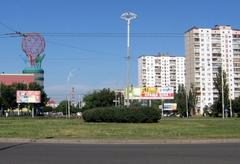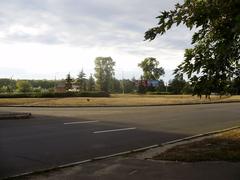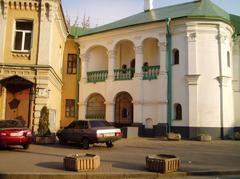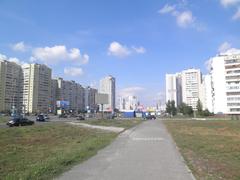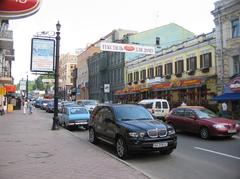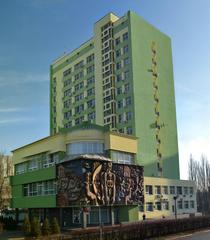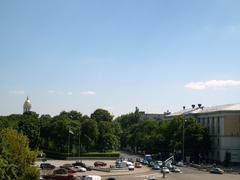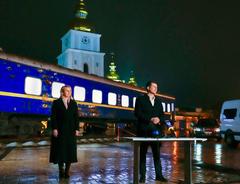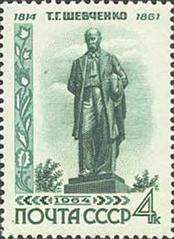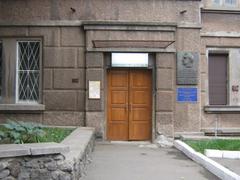Lybidska Square Kyiv: Visiting Hours, Tickets, and Historical Significance Guide
Date: 15/06/2025
Introduction
Lybidska Square in Kyiv, Ukraine, is a vibrant urban hub where ancient legend, Soviet-era development, and modern city life converge. Named for the legendary Lybid—the sister of Kyiv’s founders—and the Lybid River, the square stands at the crossroads of history and progress. Today, it connects the city center to southern districts and serves as a vital transport interchange, cultural landmark, and symbol of Kyiv’s evolving identity. This comprehensive guide offers detailed insights into Lybidska Square’s past and present, with practical visitor information, travel tips, and a look at the ongoing Lybid River restoration project.
Table of Contents
- Introduction
- Historical Background
- Visiting Information
- Lybid River Restoration Project
- Practical Visitor Tips
- Frequently Asked Questions (FAQ)
- Conclusion
- References
Historical Background
Early Origins and Founding Legends
Lybidska Square is intrinsically linked to Kyiv’s founding myth. According to legend, Kyiv was established in the 5th century by three brothers—Kyi, Shchek, and Khoryv—and their sister, Lybid. The Lybid River, after which the square is named, honors this legendary figure and roots the square in the city’s earliest narratives (Wikipedia: History of Kyiv). This mythological origin gives the square symbolic resonance as a living connection to Kyiv’s ancient past.
Development Through the Centuries
Kyiv rose as the capital of Kyivan Rus in the medieval era, surviving invasions and changing hands among Lithuanian, Polish, and Russian rulers. As the city expanded southward in the 19th century, the area of present-day Lybidska Square began to take shape, further developing with the city’s industrialization and urban growth (Wikipedia: History of Kyiv).
Soviet Era Transformation and Metro Expansion
The Soviet period brought dramatic urban and infrastructural change. Lybidska Square emerged as a major junction, with construction of large residential buildings and administrative centers. The opening of Lybidska Metro Station in 1984 on the Obolonsko–Teremkivska Line (Blue Line) cemented its role as a key transportation node (Wikipedia: Lybidska (Kyiv Metro)). The area’s Soviet modernist architecture—including the iconic “Flying Saucer” (Tarilka) building—became defining features. Post-Soviet decommunization has since led to the removal of Soviet symbols and a renewed focus on local heritage (ilovekyiv.com: History Kyiv Metro).
Post-Independence and Urban Renewal
Following Ukraine’s independence, Lybidska Square continued to evolve, blending Soviet-era structures with modern developments such as Ocean Plaza, one of Kyiv’s largest shopping malls. The square remains a bustling intersection, serving thousands of commuters daily and forming a gateway to both commercial and residential districts (Lost With Purpose). Urban renewal projects, including the Lybid River restoration, aim to reclaim green spaces and enhance quality of life for residents and visitors alike (Pragmatika: Plan for Lybid River Restoration).
Visiting Information
Visiting Hours and Accessibility
- Lybidska Square: Open public space, accessible 24/7.
- Lybidska Metro Station: Operates daily from approximately 5:45 AM to midnight. Standard metro fares apply; tickets are available at kiosks and via contactless payment.
- Ocean Plaza Mall: Open daily from 10:00 AM to 10:00 PM (Ocean Plaza Official Site).
- Accessibility: The metro station is equipped with escalators and elevators. Sidewalks and public areas feature ramps and tactile paving, though some older buildings may have limited accessibility.
Getting There
- Metro: Lybidska Station on the Obolonsko–Teremkivska Line (Blue Line) provides the most direct access.
- Bus and Trolleybus: Multiple routes serve the square; marshrutkas (minibuses) are also available.
- Taxi and Rideshare: Readily accessible throughout Kyiv.
Nearby Attractions
- Ocean Plaza: A leading shopping and entertainment complex with retail, dining, cinema, and an indoor aquarium.
- Tarilka (Flying Saucer) Building: A Soviet modernist landmark, currently under restoration (Public Delivery: Kyiv UFO).
- Green Spaces: Parks and walkways near the Lybid River corridor offer relaxation and scenic photo opportunities.
- Palats Ukraina: A major concert and event venue, just one metro stop north.
- Institute of Information: The “Flying Saucer,” a must-see for architecture enthusiasts.
Unique Features and Activities
- Architectural Walks: Self-guided or group tours explore Soviet and modernist architecture.
- Local Dining: Sample Ukrainian cuisine at Puzata Hata or enjoy diverse options in Ocean Plaza’s food court (Bucketlistly).
- Photography: The area’s mix of historic and contemporary buildings, vibrant street life, and public art installations make it a photographer’s delight.
Lybid River Restoration Project
History and Cultural Significance
The Lybid River, mostly hidden beneath Kyiv’s streets, is steeped in legend and local identity. Its course has shaped urban development and inspired both folklore and environmental activism (Visit Ukraine).
Environmental Challenges and Restoration Efforts
Decades of urbanization have led to neglect, pollution, and silt accumulation in the river’s underground channels, resulting in flooding risks and ecological degradation (Ecopolitic). In response, the Kyiv City Council launched a major clean-up and restoration project, allocating nearly 15 million UAH (approx. $400,000 USD) to remove debris and improve drainage in targeted sections within a 10-day timeline.
Controversies and Urban Development
Plans to further bury sections of the Lybid River for commercial development—particularly to build a new access road to Ocean Mall—have raised public concern. Environmental groups and urbanists warn that such measures threaten the river’s revival and long-term ecological health (Pragmatika Media).
Advocacy and Public Engagement
Local and international voices have rallied to protect the river. Danish urbanist Mikael Colville-Andersen and citizen advocacy campaigns emphasize the need to preserve and daylight urban waterways as public assets (Kyiv1). Public petitions have quickly gained traction, reflecting strong community support for the river’s restoration.
Visitor Insights
- Viewing the River: Most of the Lybid River is underground; however, the area around Lybidska Square is central to ongoing restoration dialogue.
- Tours and Events: While the river itself is not directly accessible, urban history tours and community events often discuss its significance.
- Photo Opportunities: Capture the contrast between bustling city life above and the storied waterway below.
Practical Visitor Tips
- Safety: Lybidska Square and its surroundings are considered safe for visitors, with regular foot traffic and local amenities (Xplrverse).
- Best Time to Visit: Late spring to early autumn offers the most pleasant weather for urban exploration.
- Payments: Credit cards are widely accepted, but carrying some cash is useful for small purchases.
- Language: Ukrainian is official; Russian is also spoken. English is increasingly common in service areas, especially in malls and tourist sites.
- Accessibility: Plan ahead if you have specific mobility needs, especially when visiting older buildings.
Frequently Asked Questions (FAQ)
Q: What are the visiting hours for Lybidska Square?
A: The square is open 24/7 as a public space. The metro station operates from about 5:45 AM to midnight.
Q: Is there an entrance fee?
A: No, visiting the square is free. Metro rides and certain attractions (cinema, special events) require tickets.
Q: How do I get there?
A: Take the Blue Line metro to Lybidska Station. Numerous buses, trolleybuses, and marshrutkas also serve the area.
Q: Are guided tours available?
A: Some Kyiv city tours include Lybidska Square and its landmarks. The Institute of Information (“Flying Saucer”) may host occasional special events or tours.
Q: Is the area accessible for people with disabilities?
A: The metro station has elevators and escalators, and public spaces feature ramps and tactile paving. Some older buildings may be less accessible.
Q: Can I see the Lybid River?
A: Most of the Lybid flows underground; direct viewing is limited. However, restoration projects and advocacy efforts are often highlighted in local events and exhibits.
Conclusion
Lybidska Square is more than a transit point—it is a microcosm of Kyiv’s storied past and ambitious future. Here, legends mingle with Soviet monuments and contemporary urban life, all set against the backdrop of the hidden but culturally vital Lybid River. With round-the-clock access, efficient transportation, vibrant commercial centers, and ongoing environmental renewal, Lybidska Square is a must-visit for anyone seeking to explore Kyiv’s multifaceted identity.
To enrich your experience and stay updated on local events, restoration efforts, and city news, consider downloading the Audiala app or following Kyiv’s official cultural platforms.
References
- Wikipedia: History of Kyiv
- Wikipedia: Lybidska (Kyiv Metro)
- Pragmatika Media: Plan for Lybid River Restoration
- Lost With Purpose: Kyiv Itinerary and Urban Guide
- Ecopolitic: Lybid River Cleaning Project News
- Kyiv1: Danish Urbanist on Lybid River Fate
- Xplrverse: Is Ukraine Safe for Travelers in 2025?
- ilovekyiv.com: History Kyiv Metro
- Bucketlistly: Kyiv Things to Do Guide
- Ocean Plaza Official Site
Images and videos related to Lybidska Square, the metro station, and the Lybid River restoration are recommended to be embedded with descriptive alt tags such as “Lybidska Square Kyiv historical view,” “Lybidska Metro Station architecture,” and “Lybid River restoration project in Kyiv.”


